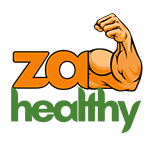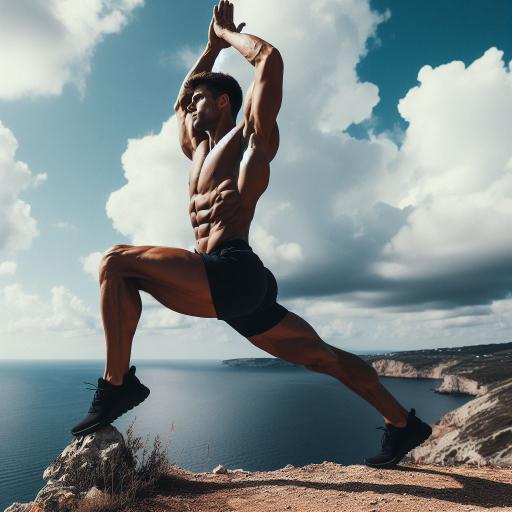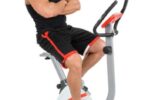Stretching is not just something you do before or after a workout. It is a vital part of your health and wellness that can benefit you in many ways. In this blog, we will explore some of the benefits of stretching, how to do it properly, and some of the best stretches for different body parts.
The Benefits of Stretching
Stretching can help you improve your flexibility, range of motion, posture, blood circulation, mood, performance, and more. Here are some of the benefits of stretching in more detail:
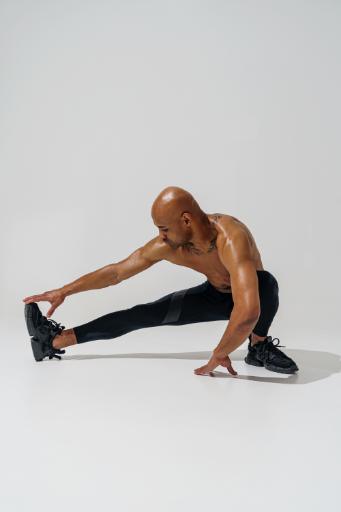
- Flexibility: Stretching can help you increase your flexibility, which is the ability of your muscles and joints to move through their full potential. Flexibility is important for your overall health, as it can help you easily perform everyday activities, prevent injuries, and reduce muscle tension and pain.
- Range of motion: Stretching can also help you increase your range of motion, which is the degree of movement your joints can achieve. Range of motion is essential for your joint health, as it can help you maintain your mobility, prevent stiffness, and avoid arthritis and other joint problems.
- Posture: Stretching can help you improve your posture, which is the alignment of your body parts in relation to each other. Posture is crucial for your spinal health, as it can help you prevent back pain, neck pain, headaches, and other musculoskeletal issues. Stretching can help you correct muscle imbalances, strengthen your core, and align your spine.
- Blood circulation: Stretching can help you improve your blood circulation, which is blood flow throughout your body. Blood circulation is vital for your organ function, as it can help you deliver oxygen and nutrients to your cells, remove waste products and toxins, and regulate your body temperature. Stretching can help you increase blood flow to your muscles, which can speed up your recovery, reduce soreness, and enhance your performance.
- Mood: Stretching can help you improve your mood, which is the state of your emotions and feelings. Mood is important for your mental health, as it can affect your motivation, productivity, and happiness. Stretching can help you release endorphins, which are natural chemicals that make you feel good, reduce stress, and improve your focus.
- Performance: Stretching can help you improve your performance, which is the quality and efficiency of your actions and skills. Performance is important for your physical health, as it can help you achieve your goals, improve your fitness, and prevent injuries. Stretching can help you warm up your muscles, prepare your body for activity, and improve your coordination, balance, and agility.
How to Stretch Properly
To get the most out of stretching, you need to do it properly. Here are some tips on how to stretch correctly:
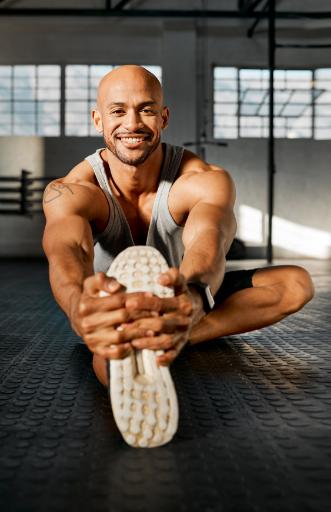
- Warm-up: You should never stretch cold muscles, as this can increase your risk of injury. Before stretching, you should warm up with some light cardio, such as walking, jogging, or biking, for about 10 minutes. This will increase your blood flow, raise your body temperature, and loosen up your muscles.
- Choose the right type of stretching: There are different types of stretching, such as static, dynamic, ballistic, and PNF, and each one has its own purpose and benefits. Static stretching involves holding a stretch for a period of time, usually 15 to 30 seconds and is best done after a workout or at the end of the day. Dynamic stretching involves moving your joints and muscles through their full range of motion, usually in a controlled and rhythmic manner and is best done before a workout or in the morning. Ballistic stretching involves bouncing or jerking your muscles and joints beyond their normal range of motion and is not recommended for most people, as it can cause injury and muscle damage. PNF stretching involves contracting and relaxing your muscles in a specific sequence, usually with the help of a partner or a device and is best done by experienced athletes or under the guidance of a professional.
- Focus on major muscle groups: You should stretch all the major muscle groups of your body, such as your calves, thighs, hips, lower back, neck, and shoulders. You should also stretch the muscles and joints that you use frequently or that are involved in your activity. For example, if you are a runner, you should pay extra attention to your hamstrings, quadriceps, and calves.
- Be gentle and gradual: You should stretch gently and gradually without forcing or bouncing. You should feel mild tension or discomfort but not pain. If you feel pain, you are stretching too far or too fast, and you should back off and ease into the stretch. You should also breathe normally and relax your muscles as you stretch.
- Be consistent and patient: You should stretch regularly and consistently, at least two to three times a week, to see results. You should also be patient and realistic, as stretching takes time and practice to improve your flexibility and range of motion. You should not expect to become a contortionist overnight but rather enjoy the process and the benefits of stretching.
The Best Stretches for Your Body
There are many stretches that you can do for different parts of your body, but here are some of the best ones that you can try. You can do these stretches anytime, anywhere, as long as you have enough space and a comfortable surface. You can also use props, such as a towel, a strap, a foam roller, or a ball, to enhance your stretches.
IT Band Stretches
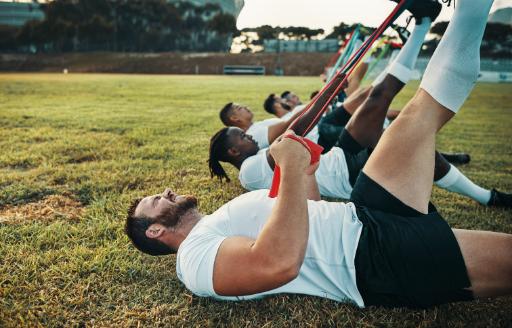
The IT band, or iliotibial band, is a thick band of connective tissue that runs along the outside of your thigh, from your hip to your knee. It helps stabilize your knee and hip joints and is often involved in running and cycling. The IT band can become tight and inflamed, causing pain and reduced mobility. Here are some stretches that can help you loosen and relieve your IT band:
- Standing IT band stretches : Stand with your feet shoulder-width apart and cross your right leg behind your left leg. Keep your right foot flat on the floor and your left knee slightly bent. Lean your upper body to the left, reaching your right arm over your head. You should feel a stretch along the outside of your right thigh. Hold for 15 to 30 seconds, then switch sides and repeat.
- Lying IT band stretches : Lie on your back with your legs extended and a strap around your right foot. Lift your right leg up and bring it across your body to the left, keeping your left leg on the floor and your right leg straight. Use the strap to gently pull your right leg closer to your chest. You should feel a stretch along the outside of your right thigh. Hold for 15 to 30 seconds, then switch sides and repeat.
- Foam roller IT band stretches : Place a foam roller on the floor and lie on your right side, with your right hip on the foam roller and your left leg crossed over your right leg, with your left foot on the floor. Support your upper body with your right forearm and your left hand. Slowly roll your right hip up and down the foam roller from your hip to your knee, applying pressure to the tight spots. Do this for 30 to 60 seconds, then switch sides and repeat.
Glute Stretches
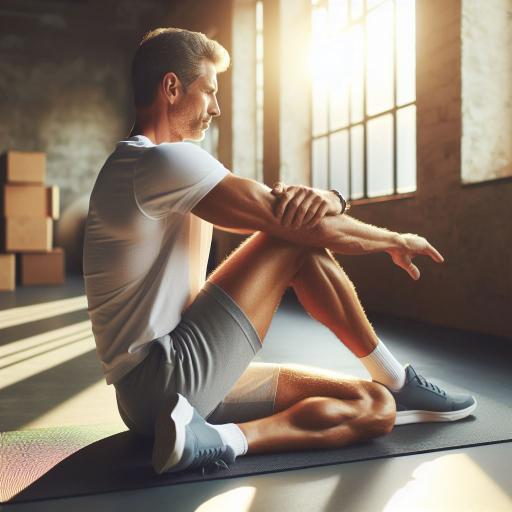
The glutes, or gluteal muscles, are the muscles of your buttocks, and they are responsible for extending, rotating, and abducting your hips. They are also involved in many movements, such as walking, running, jumping, and squatting. The glutes can become tight and sore, causing pain and reduced mobility. Here are some glute stretches
that can help you relax and release your glutes:
- Seated glute stretches : Sit on the floor with your legs extended and your back straight. Cross your right leg over your left leg, placing your right foot on the floor outside your left knee. Place your left elbow on your right knee and your right hand on the floor behind you. Gently twist your upper body to the right, looking over your right shoulder. You should feel a stretch in your right glute and lower back. Hold for 15 to 30 seconds, then switch sides and repeat.
- Lying glute stretches : Lie on your back with your knees bent and your feet flat on the floor. Cross your right ankle over your left knee, forming a figure-four shape. Lift your left foot off the floor and bring your left knee toward your chest. Interlace your fingers behind your left thigh and gently pull your left leg closer to your chest. You should feel a stretch in your right glute and hip. Hold for 15 to 30 seconds, then switch sides and repeat.
- Pigeon pose in glute stretches : Start on your hands and knees, with your knees under your hips and your hands under your shoulders. Slide your right knee forward, placing it behind your right wrist and your right foot behind your left wrist. Extend your left leg back, keeping your hips square and your toes pointed. Lower your upper body to the floor, resting your forehead on your arms or a pillow. You should feel a stretch in your right glute and hip. Hold for 15 to 30 seconds, then switch sides and repeat.
Note: This article is too long to fit in one blog post, so we have decided to split it into two parts. In the next part, we will talk more about more stretching and how to do it safely and effectively. Stay tuned for the second part of this article, coming soon!
